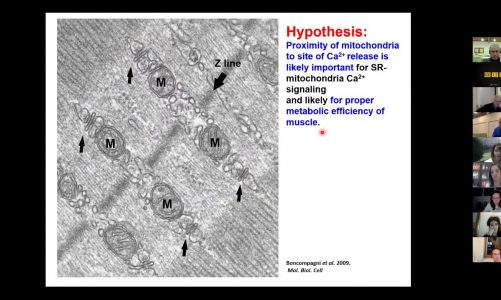Non-shivering thermogenesis occurs in brown adipose tissue (brown fat) that is present in all eutherians (swine being the only exception currently known).Brown adipose tissue has a unique protein (thermogenin or UCP) that allows the uncoupling of protons moving down their mitochondrial gradient from the synthesis of ATP, thus allowing the energy to be dissipated as heat.[4]
In this process, substances such as free fatty acids (derived from triacylglycerols) remove purine (ADP, GDP and others) inhibition of thermogenin (uncoupling protein 1), which causes an influx of H+ into the matrix of the mitochondrion and bypasses the ATP synthase channel. This uncouples oxidative phosphorylation, and the energy from the proton motive force is dissipated as heat rather than producing ATP from ADP, which would store chemical energy for the body’s use. Thermogenesis can also be produced by leakage of the sodium-potassium pump and the Ca2+ pump.[5] Thermogenesis is contributed to by futile cycles, such as the simultaneous occurrence of lipogenesis and lipolysis or glycolysis and gluconeogenesis.
The low demands of thermogenesis mean that free fatty acids draw, for the most part, on lipolysis as the method of energy production.
https://en.wikipedia.org/wiki/Thermogenesis
source



